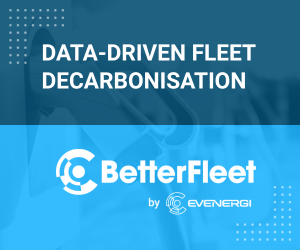Accurate emissions reporting is crucial for advancing fleet sustainability, ensuring regulatory compliance, and enhancing fleet management. At the recent South Australia Professional Development Forum, Lucinda Hirth, Senior Sustainability Consultant at Rewild, delivered a detailed overview of emissions reporting and carbon accounting.
Her session aimed to demystify these concepts and provide practical guidance for organisations navigating the complexities of carbon accounting. Here’s a summary of the key insights from her talk.
Understanding Carbon Accounting
Carbon accounting involves tracking and managing greenhouse gas (GHG) emissions. It is essential to understand that greenhouse gases include not only carbon dioxide (CO₂) but also methane (CH₄) and nitrous oxide (N₂O), each with different global warming potentials (GWPs). The standard metric for measuring these gases is carbon dioxide equivalent (CO₂e), which allows for a unified approach to reporting and managing emissions.
The fundamental formula for calculating emissions is: Activity Unit × Emission Factor = Emissions (CO₂e). For example, the activity unit could be the distance travelled by a vehicle, while the emission factor is sourced from global databases. This simple calculation provides an estimate of emissions in tonnes or kilograms of CO₂e.Emissions are also classified into three scopes:
- Scope 1: Direct emissions from owned or controlled sources (e.g., company vehicles, refrigerants).
- Scope 2: Indirect emissions from the generation of purchased electricity (e.g., electricity used in office buildings).
- Scope 3: Indirect emissions from the entire value chain, including upstream and downstream activities (e.g., emissions from the production of purchased goods, employee commuting).
She noted that Scope 3 emissions often account for the largest portion of an organisation’s carbon footprint. These are also the most challenging to measure and manage due to their indirect nature.
The Role of Carbon Offsets
Carbon offsets are a way for organisations to compensate for the emissions they can’t reduce within their own operations by investing in projects that reduce or remove an equivalent amount of greenhouse gases elsewhere. These offsets come from projects that either sequester carbon (e.g., reforestation) or prevent emissions (e.g., renewable energy projects).
However, there is a distinction between being “carbon neutral” and achieving “net zero.” While carbon neutral organisations purchase offsets to balance out their emissions, net zero organisations aim to reduce their emissions by 90-95% before offsetting the remaining emissions.
Being carbon neutral is a simple way for companies to show they care about sustainability, but it does have some downsides. These include the risk of greenwashing and the fact that not all carbon offsets are equally reliable or affordable. It’s better for organisations to focus on cutting their emissions as much as they can before using offsets to make up the rest.
Preparing for Mandatory Reporting
Upcoming changes to the Corporations Act will require large Australian businesses to report not only their carbon emissions but also their climate-related risks and opportunities. This shift aims to improve transparency and provide investors with confidence in the organisations’ climate risk management.
Organisations will need to report on:
- Climate risk management systems
- Decarbonisation strategies
- Financial impacts of climate change
- Specific carbon emissions metrics and targets
Even organisations not directly subject to mandatory reporting are likely to face pressure from clients and stakeholders who are. This trickle-down effect means that businesses should be prepared to provide accurate carbon data and engage with their entire value chain to manage scope 3 emissions effectively.
Setting and Managing Emission Targets
When setting emission boundaries, organisations can use the Greenhouse Gas Protocol’s control approach. This involves assessing direct and indirect emissions from their activities. Applying a relevance test to determine which scope 3 emissions are significant enough to include in reporting is important.
Effective carbon accounting requires comprehensive data collection, including fuel usage, electricity consumption, waste audits, and employee commuting patterns. Tools like the Climate Zero software can facilitate this process by integrating with existing systems and providing transparent, traceable data for auditing and reporting.
Carbon Reduction Strategies
To reduce emissions, organisations can adopt a variety of strategies, such as:
- Avoidance: Eliminating activities that produce emissions.
- Reduction: Minimising emissions from necessary activities.
- Replacement: Using more efficient technologies or fuels.
- Offsetting: Balancing remaining emissions through carbon offset projects.
Setting targets can involve absolute reductions (e.g., reducing total emissions by 50%) or intensity targets (e.g., emissions per unit of revenue). Combining these approaches allows for flexibility and clear communication of carbon reduction goals.
Summary of Q&A Session
- Difference Between Standard and High-Quality Offsets: The quality of carbon offsets can vary significantly. According to Climate Active, which sets the standards for carbon neutrality in Australia, high-quality offsets must meet several criteria:
-
- Verification Scheme: The offset must go through a rigorous verification process.
- Vintage Year: The year the offset was created is crucial.
- Project Type: Preference is given to projects with significant community and environmental benefits, such as Australian-based revegetation or sequestration projects.
ReWild focuses on supporting projects that offer these benefits, but the choice of offsets also depends on many factors like business values and budget.
- Offsetting Scope 1, 2, and 3 Emissions: Organizations vary in their approach to carbon credits:
-
- Some focus solely on offsetting Scope 1 emissions.
- Others address Scope 1, 2, and 3 emissions based on their specific needs, stakeholder requirements, and public messaging.
The approach depends on the organisation’s goals and what they want to communicate to their stakeholders.
Purchasing low-quality offsets can have serious repercussions:
-
- Validity: The carbon neutral claim may be invalid if the offsets do not result in actual carbon sequestration or avoidance.
- Marketability: Low-quality offsets can damage a company’s reputation. Reports of ineffective projects or detrimental community impacts can lead to the need for additional offset purchases and detailed explanations of the risk assessment process for selecting offset projects.
- Assurance requirements: Under the Australian Sustainability Reporting Standards (ASRS), companies will be required to have their emissions data checked by an external auditor. There are two types of assurance for data:
-
- Limited assurance: A basic check where auditors review the information for obvious issues but don’t investigate every detail. It provides some confidence that the data is correct.
- Reasonable assurance: A more in-depth audit where auditors thoroughly examine the data, providing a higher level of confidence in its accuracy and reliability.
While specific assurance guidelines are still under development, the audit requirements will be focused on emissions data and phased in to give companies time to develop data management plans.
Conclusion
By understanding the terminology, learning how to measure, manage and report on emissions, and implementing effective reduction strategies, organisations can better manage their carbon footprints and contribute to broader climate goals. Starting with a base year assessment and using data management tools can simplify the process and ensure ongoing progress in carbon management.
A special thank you to our speaker, Lucinda Hirth for sharing her expertise!
Did you find this article interesting? Click the ‘heart’ button above to give it a ‘like’!



















